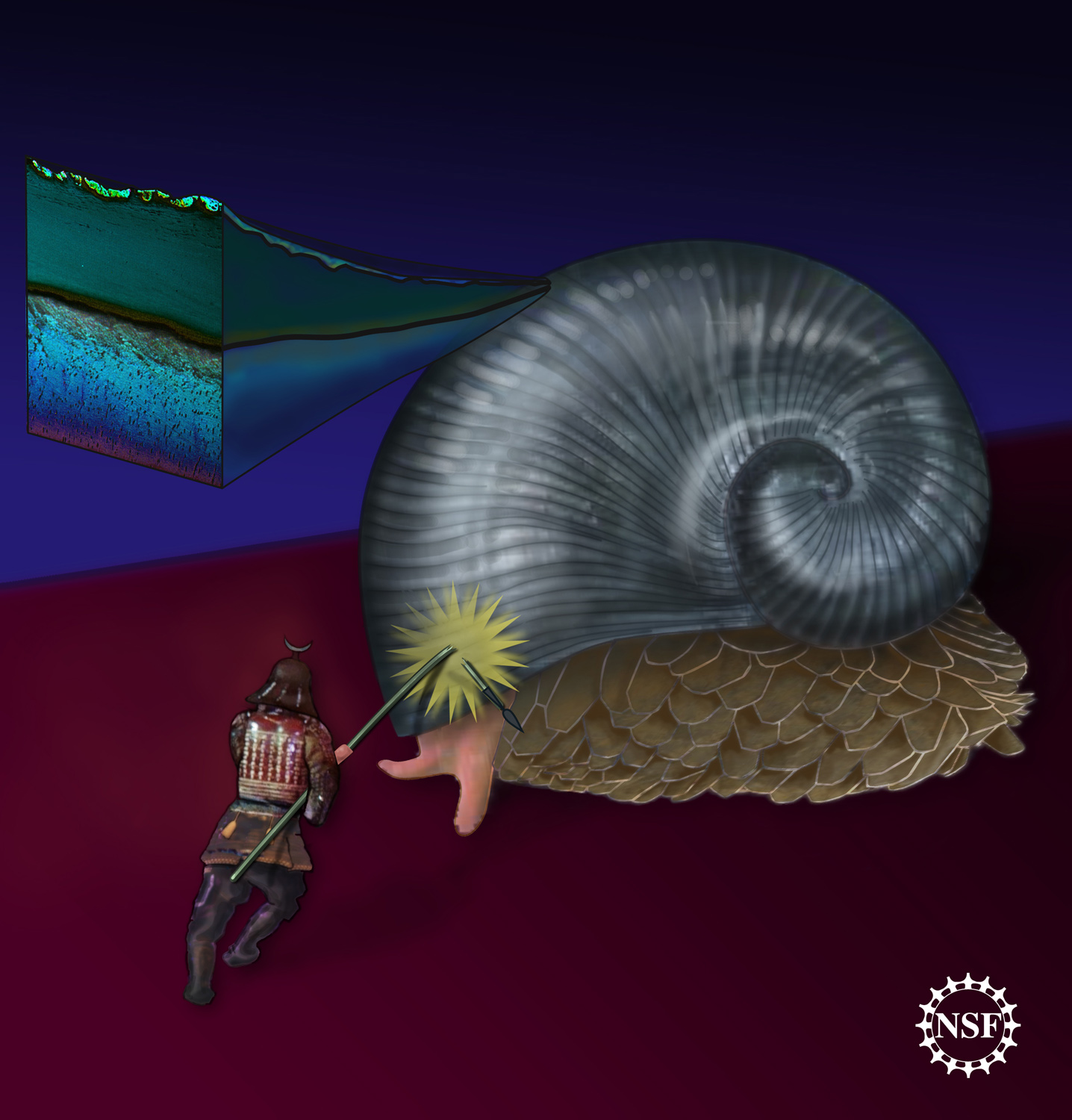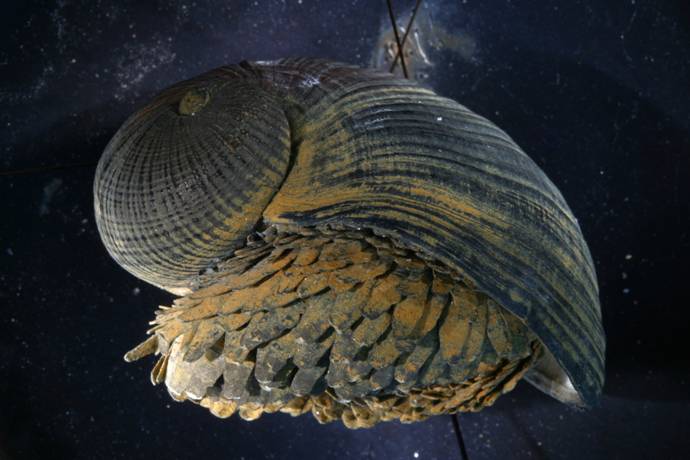The scaly-foot snail inhabits the Kairei Indian hydrothermal vent field, two-and-one-half miles below the central Indian Ocean, according to the press release. Yesterday while I was writing about this extra-tough snail from the earlier MIT press release, here and elsewhere, I was unable to find pretty-enough accompanying images with clear permissions for usage.
Now, thanks to the NSF, I can post pictures that almost do this marvelous critter justice!

Credit: Zina Deretsky, National Science Foundation, inset after Haimin Yao et al., PNAS, January 2010
The scaly-foot snail resists a knight's lance attack in the fanciful illustration above. But the gastropod's unusual, three-layered shell is both penetration and crush resistant.
Key features of this snail's shell that may inspire new and improved vehicle or personal armor design are the outer granular layer made of iron sulfide and a much thicker than usual organic middle layer.

Credit: Dr. Anders Warén, Swedish Museum of Natural History, Stockholm, Sweden
The inmost layer of the scaly-foot snail's shell is highly calcified. Most snails have much thinner, two-layered shells.




Comments